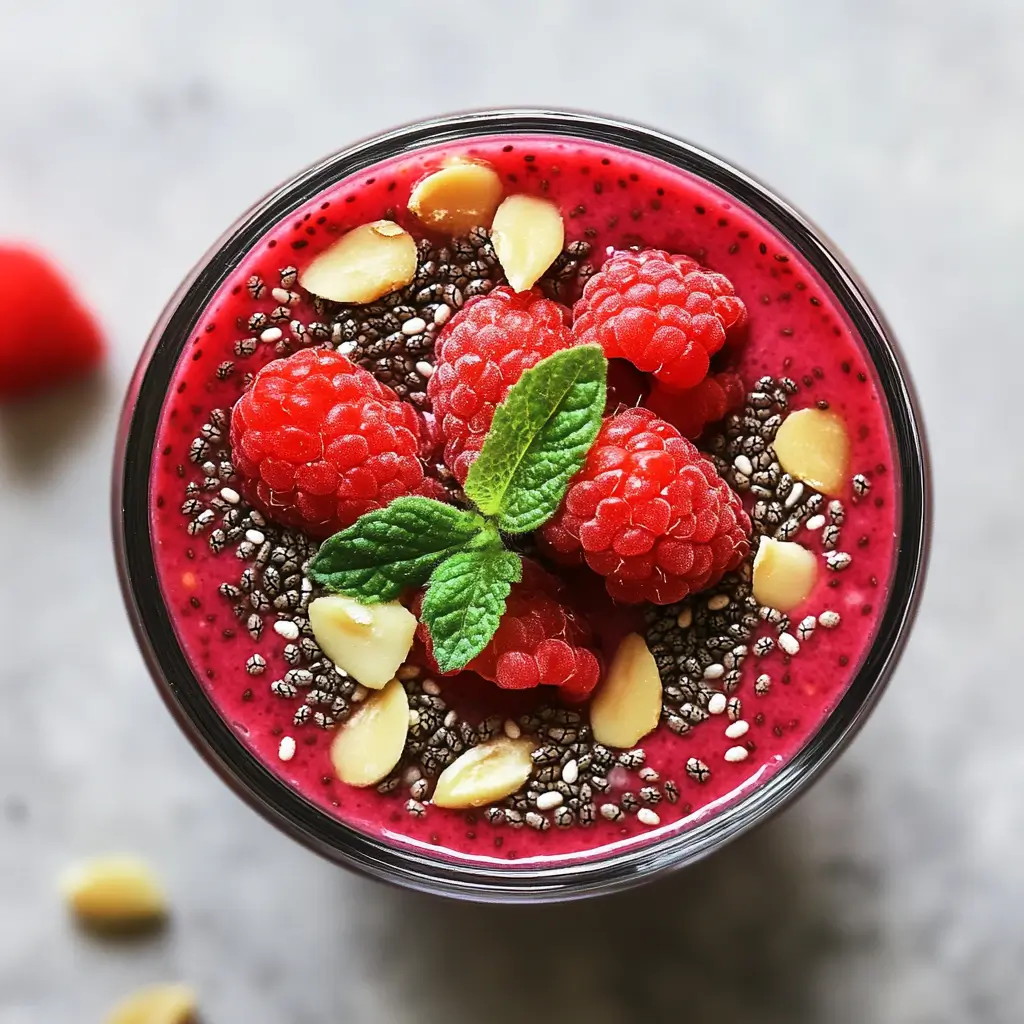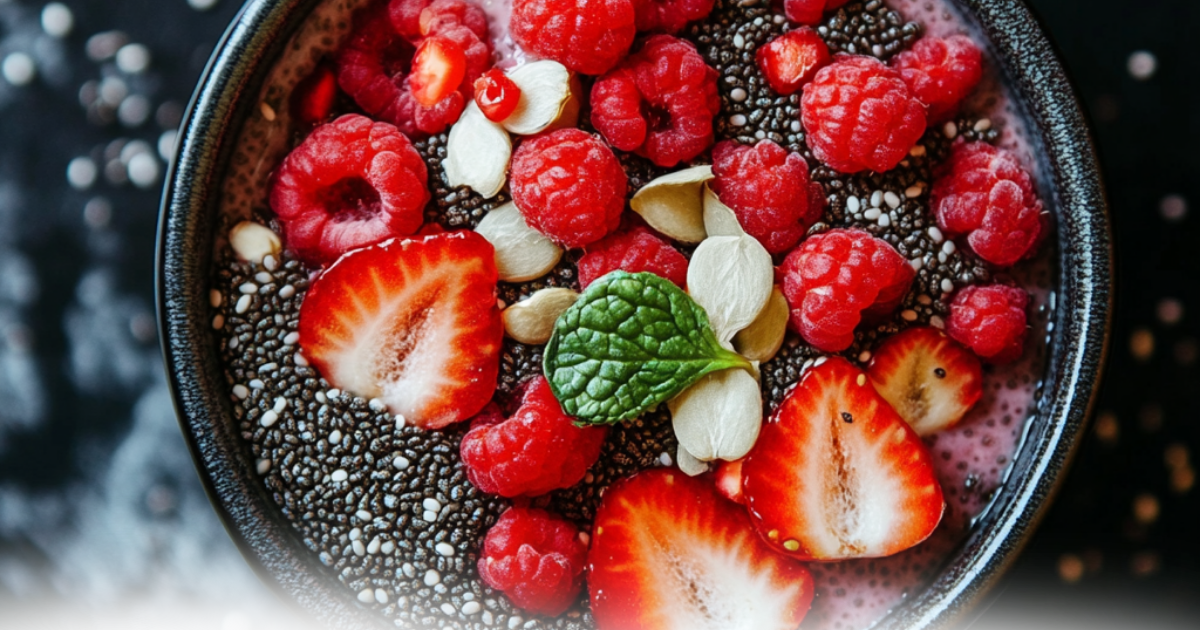Chia seeds are hailed as a superfood for their remarkable health benefits, but they aren’t without their quirks. While these tiny seeds are packed with fiber, omega-3 fatty acids, and essential nutrients, there are some critical dos and don’ts to consider when adding them to your diet. In this article, we’ll explore what not to do with chia seed and how to enjoy them safely. From avoiding common mishaps like eating them dry to understanding their interaction with medications, we’ll dive deep into the potential risks and best practices.
Table of contents
Overeating: A Common Pitfall
Digestive Challenges with Too Much Fiber
Rich in fiber, these seeds offer almost 10 grams per ounce, supporting digestion and heart health. Yet, consuming excessive amounts may cause bloating, gas, or abdominal discomfort, particularly for those not used to high-fiber foods. They can also lead to constipation without adequate hydration.

Solution: Keep to a serving size of about 2.5 tablespoons daily, increase fiber gradually, and drink plenty of water to prevent digestive issues.
Chia Seeds and Digestive Discomfort
Overindulging in chia seeds doesn’t just upset your stomach—it can also cause constipation if you aren’t hydrating enough. The gel-like mucilage formed by chia seeds when soaked can slow down digestion if consumed in large quantities. On the flip side, this gel-like property is what makes chia seed great for creating a feeling of fullness and aiding weight management, but only in moderation.
Excessive Portions and Nutrient Absorption Challenges
Another problem with consuming too many chia seeds is their impact on nutrient absorption. Chia seeds are rich in phytic acid, a compound that can bind to minerals like zinc, calcium, and iron, making them harder for your body to absorb. This means that the more chia seeds you eat, the less likely your body is to benefit from other vital nutrients in your diet.
To maximize the benefits of chia seeds, pair them with a well-balanced diet and keep portions reasonable. Remember, more isn’t always better when it comes to this superfood.
Eating Dry Chia Seeds
Why Chia Seeds Are a Choking Hazard
One of the biggest mistakes people make with chia seeds is eating them dry, and that can lead to serious risks. These seeds are hydrophilic, meaning they can absorb water quickly—up to 27 times their weight! When consumed dry and followed by water, they expand rapidly in the throat or esophagus, potentially causing a blockage. This is especially dangerous for individuals with swallowing difficulties or a history of esophageal issues.
Imagine taking a spoonful of dry chia seeds thinking they’ll provide a quick nutritional boost, only to end up coughing or feeling discomfort. It’s a classic example of what not to do with chia seeds. Instead, always hydrate them before consuming. This simple step ensures safety while allowing you to enjoy their many benefits.

Safe Preparation Techniques to Avoid Choking Risks
Preparing chia seeds properly is key to avoiding these hazards. The easiest method is to soak them in water, milk, or juice for at least 15 minutes. During this time, the seeds absorb liquid and form a gel-like consistency, making them safe to eat. You can also leave them soaking overnight in the fridge for use in puddings, smoothies, or oatmeal.
Another tip is to incorporate pre-soaked chia seeds into recipes like baked goods or sauces. Doing so not only eliminates the risk of choking but also enhances their digestibility. Remember, safety comes first when consuming chia seeds—no shortcuts here.Are Peanut Butter and Chia Seeds Good for You?
Ignoring Medication Interactions
Effects on Blood Sugar and Diabetes Drugs
Due to their fiber content, chia seeds help stabilize blood sugar. However, for individuals on blood sugar-lowering medications, they might amplify the drug’s effects, potentially leading to hypoglycemia.
Solution: Monitor blood sugar levels when introducing these seeds into your diet, and consult your doctor if needed.
Blood Pressure and Anticoagulant Medication Concerns
The natural omega-3 fatty acids in these seeds support heart health but may also thin the blood. This can intensify the effects of anticoagulants or blood pressure medications, leading to complications.
Solution: Moderate your intake and avoid consuming large portions close to taking medication.
Neglecting Allergic Reactions
Common Symptoms of Chia Seed Allergies
While chia seeds are generally considered safe, it’s crucial not to overlook potential allergic reactions. Although rare, some individuals may experience symptoms like itching, hives, facial swelling, or difficulty breathing after consuming chia seeds. If you have a known sesame allergy, there’s a chance you could react similarly to chia seeds due to cross-reactivity.
What not to do with chia seeds? Don’t assume they’re harmless if you have food sensitivities or allergies. It’s always best to test a small amount before incorporating them into your regular diet. Should you experience any unusual symptoms, seek medical advice immediately.
How to Safely Identify and Manage Allergies
To avoid allergic complications, introduce chia seeds gradually. Consider consulting a doctor, especially if you’ve had previous allergic reactions to seeds. You can also opt for allergy testing to ensure it’s safe to consume them.
For more ideas on incorporating superfoods into your diet, explore recipes like Chocolate Peanut Butter Chia Pudding on Zena Recipes.
Consuming Chia Seeds Without Soaking
The Importance of Hydration and Chia Seeds
One of the biggest mistakes with chia seed is consuming them dry without soaking. These seeds rapidly absorb liquid and can expand in your throat or digestive tract, creating discomfort or even posing a choking hazard. What not to do with chia seeds? Don’t eat them dry, especially if you aren’t drinking enough water afterward.
Proper hydration helps activate the seeds’ gel-like properties, making them easier to digest and safer to consume.
Soaking Methods for Maximum Safety and Nutrition
Soaking chia seed before eating is a simple but essential step. To prepare, mix 2.5 tablespoons of seeds with a cup of water, milk, or juice and let them sit for at least 15 minutes. This process allows the seeds to fully absorb the liquid, creating a pudding-like consistency that’s perfect for smoothies, oatmeal, or desserts.
If you’re looking for delicious recipes to include soaked chia seed, try Is Chia Pudding Good for You? on Zena Recipes for inspiration.
Excessive Use in Diets with Chronic Illness
Kidney Health and High Oxalate Levels in Chia Seeds
For individuals with kidney issues, consuming chia seed in large amounts can pose problems. These tiny seeds are naturally high in oxalates, compounds that can bind with calcium and contribute to the formation of kidney stones. If you have a history of kidney stones or chronic kidney disease, it’s essential to monitor your chia seed intake carefully.
What not to do with chia seeds? Don’t overconsume them if you have a preexisting kidney condition. Excessive intake can also elevate levels of potassium and phosphorus, which need to be restricted for individuals managing kidney health.
Monitoring Phosphorus and Potassium in Special Diets
Chia seeds are nutrient-dense, containing 244 mg of phosphorus and 115 mg of potassium in a single serving (2.5 tablespoons). While these nutrients are beneficial for most people, they can be problematic for those with restricted diets. Moderation is key to reaping the benefits without risking complications. To further reduce risks, opt for soaked or sprouted chia seed, as these preparations may lower oxalate levels.
Misunderstanding Health Risks
Prostate Cancer and Alpha-Linolenic Acid (ALA) in Chia Seed
The high content of alpha-linolenic acid (ALA) in chia seed has sparked debates about its impact on prostate cancer. While some studies suggest that excessive ALA intake may increase the risk, others indicate that it might actually reduce the likelihood of developing this type of cancer. The mixed results highlight the need for balance and further research.
What not to do with chia seeds? Don’t rely on incomplete or conflicting studies to make drastic dietary changes. Instead, focus on consuming chia seed in moderation as part of a varied diet.
Evaluating Mixed Research on Health Impacts
When adding chia seed to your meals, be mindful of their quantity and your overall dietary patterns. Although they are a fantastic source of nutrients, their potential risks, particularly for individuals with specific health concerns, should not be ignored. Always consult a healthcare professional if you’re uncertain about how chia seed might affect your health.
FAQs
Q: Can chia seed interact with medications?
Yes, they can enhance the effects of blood sugar-lowering or anticoagulant drugs. Consult your doctor for personalized advice.
Q: How should I prepare chia seeds?
Always soak them in liquid for at least 15 minutes before consuming. This makes them safe and easier to digest.
Q: Are chia seeds safe for kidney health?
Chia seed may pose risks due to their oxalate, potassium, and phosphorus content. People with kidney issues should consult a healthcare professional.
Q: Can chia seeds help with weight loss?
Yes, chia seeds are high in fiber and can help promote a feeling of fullness, which may reduce overall calorie intake when part of a balanced diet.
Q: Are chia seeds gluten-free?
Yes, chia seeds are naturally gluten-free and can be safely consumed by people with gluten sensitivities or celiac disease.
Q: Can chia seeds go bad?
Chia seeds have a long shelf life but can go rancid if not stored properly. Keep them in an airtight container in a cool, dry place to maintain freshness.
Q: Can children eat chia seeds?
Yes, chia seeds are generally safe for children when consumed in moderation. Ensure they are soaked beforehand to avoid any choking hazards.
Q: Are chia seeds a good source of omega-3 fatty acids?
Yes, chia seeds are an excellent plant-based source of omega-3 fatty acids, which are beneficial for heart and brain health.

